TechRadar Verdict
Pros
- +
Excellent performance
- +
Undercuts competing AMD cards on price
- +
Decent overclocking chops
- +
Fast memory
Cons
- -
Suffers with DiRT Showdown performance
Why you can trust TechRadar
The Nvidia GTX 770 looks like great value in contrast to Nvidia's mini-Titan, the hugely pricey GTX 780
considering how close you can get to the gaming performance of the top card, it's no surprise Nvidia wanted to give the GTX 780 a little time on its own before launching this second-tier selection.
The way it's fallen with Nvidia's second stab at the Kepler generation is pretty much the configuration we'd been hoping for since first clapping eyes on the Kepler GPU well over a year ago. Almost as soon as the GK104 GPU had been unveiled in San Francisco, specs and all, the buzz around the gathered tech press was that we were looking at the second tier GPU in the Kepler camp, regardless of Nvidia wanted to position the GTX 680.
We all knew a beefier chip surely existed, we suspected it was going to power the top pro cards, and hoped it would one day fall down into a proper top-end gamer's card. It's all worked out for Nvidia, with the GTX Titan making a significant splash when it landed a year later, and now that GK110 GPU is taking its rightful place at the head of a graphics card generation in the GTX 780.
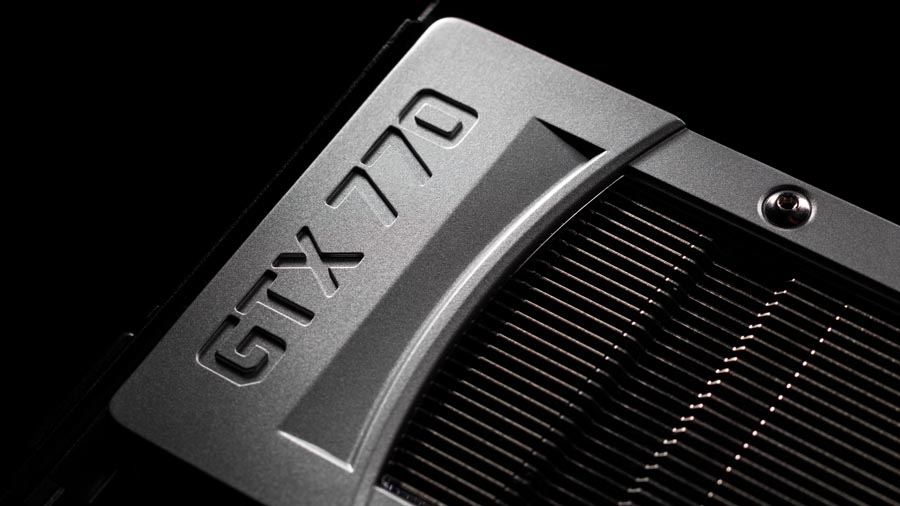
That leaves the GK104 GPU exactly where it ought to be - as the second tier GPU of this new series. That's not to denigrate the quality graphics silicon it represents; it's still a great chip, with impressive energy efficiency and some serious gaming chops. But it was a much simpler chip than we'd seen in the top cards of other generations and the fact there were higher-powered Kepler GPUs was implicit from the outset in its relatively small-scale make up.
Learnt lessons
The GTX 770 then has the same full-fat GK104 GPU as was in the GTX 680 at launch, though Nvidia has definitely made an effort to ensure they're not just going down the much-maligned re-brandathon route.
"We have learnt from bad examples in the past," Nvidia told us at the launch. "So the obvious one is the 9800GTX+ to GTS 250 - none of these [700 series cards] are direct re-brands of what's come before. We've gone to the pains of making sure we've got better clocks, better design as a whole, better cooling and GPU Boost 2.0."
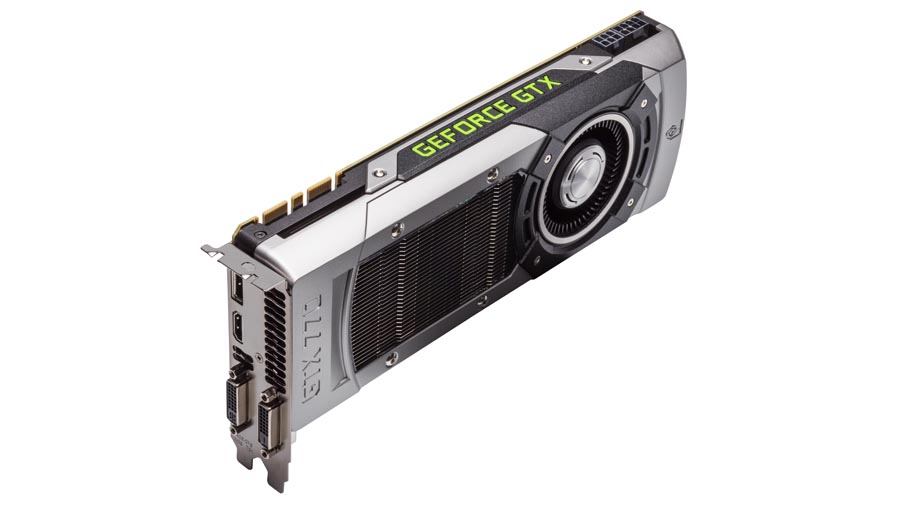
So yes, while we definitely are essentially looking at a GTX 680 with a sexy new Titan-esque body, it's coming in at a better price point and with some extra performance chops to boot. The key thing Nvidia is going to point to regarding this new design is the super-quick video memory it's populating its new card with.
As the GTX 680 debuted with a headline-grabbing 6GHz memory clock Nvidia is upping the memory ante with the GTX 770 and going with GDDR5 running at 7GHz out of the box. It is also kicking off with two versions of the card, one with 2GB and one with a 4GB framebuffer - though expect the 4GB versions to come as the overclocked cards with a much heftier price-tag placed on them.
But it's not just the memory that comes with a speed boost. The GK104 GPU has received a bit of a shot in the arm too, with the base clock moving up from the GTX 680's 1,006MHz to 1,046MHz. And when we're talking boost the GTX 770 generally tops out at 1,089MHz in general default trim. The addition of the GPU Boost 2.0 tech is partly responsible for opening up a little extra performance from the GK104 without doing any harm to the silicon inside.
It also means we can get some decent overclocking numbers out of the GTX 770 too. We were able to have the reference card running at a stable 1,280MHz throughout our benchmarking test suite. That doesn't necessarily give it a huge boost in terms of actual average frame rate, but the little extra boost puts considerable breathing room between it and AMD's HD 7970 GHz Edition.
Competition Pro
And that's the real competition here. The GTX 670 and GTX 680 can now effectively be forgotten - this card comfortably renders them both redundant whether you're talking about price or performance. The top single-GPU AMD card then is the real target for the GTX 770 and the fact this new Nvidia card can undercut AMD's current price gives it a pretty good start. And then it comes to straight-line performance and AMD's Tahiti XT suddenly looks like an overweight, wheezing has-been.
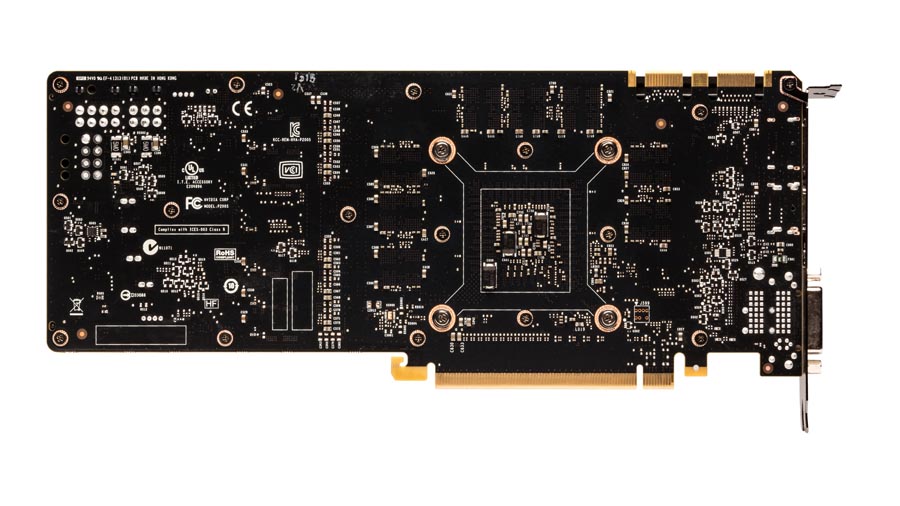
Only the notoriously AMD-centric DiRT Showdown and Sleeping Dogs benchmarks give AMD some peace - Nvidia has admitted it still hasn't solved its problem with global illumination in the latest DiRT engine. Elsewhere though it's a pretty solid win for the good-looking green-tinged graphics card, both in terms of average frame rates and the minimums too.
While it is drawing a little more power than the out-going GTX 680 - less than 10W at full load - it's still vastly more efficient than the Tahiti XT powered HD 7970 GHz edition. Even when we were running the GTX 770 at our top overclocked settings it was still running at around 50W less. The triple whammy of higher performance, lower power draw and cheaper price tag makes the GTX 770 a fantastic card.
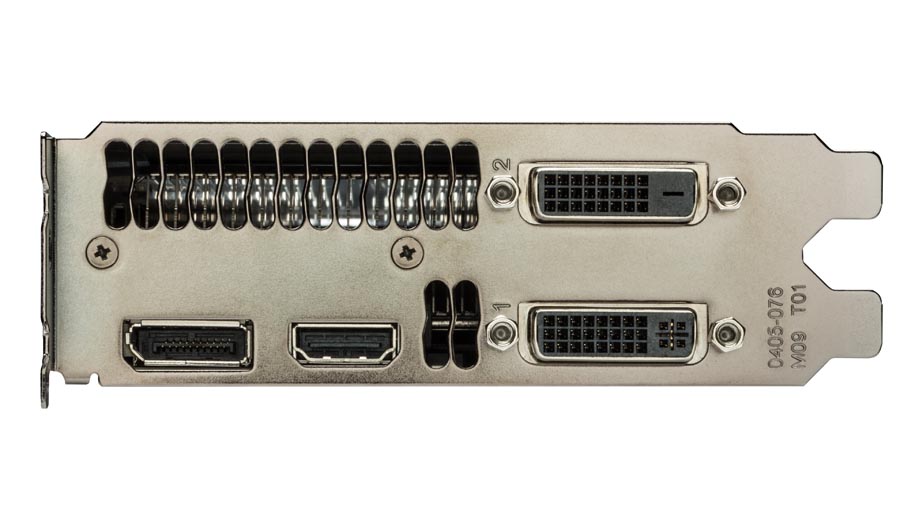
Technical analysis
Typically it's only the global illumination in the DiRT Showdown engine which causes the Kepler GPU any problems. Elsewhere the combination of higher clocks and speedy video memory pushes the GTX 770 to the front of the pack.
It's a great performer at these high-res 2560 x 1600 benchmarks, even if it is a bit slower than the leading GTX 780 or Titan. But it really is only a bit slower.
Benchmarks
DirectX 11 tessellation performance
Heaven 4.0: FPS: higher is better
GTX 770 - 24.9
GTX 770 OC - 26.2
HD 7970 GHz Ed - 23.6
GTX 680 - 22.9
DirectX 11 gaming performance
BioShock Infinite: FPS: higher is better
GTX 770 - 48
GTX 770 OC - 53
HD 7970 GHz Ed - 41
GTX 680 - 45
Crysis 3: FPS: higher is better
GTX 770 - 29
GTX 770 OC - 31
HD 7970 GHz Ed - 28
GTX 680 - 25
DiRT Showdown: FPS: higher is better
GTX 770 - 51
GTX 770 OC - 57
HD 7970 GHz Ed - 65
GTX 680 - 45
Max Payne 3: FPS: higher is better
GTX 770 - 32
GTX 770 OC - 35
HD 7970 GHz Ed - 28
GTX 680 - 30
Peak platform power
100% GPU load: Watts: lower is better
GTX 770 - 285
GTX 770 OC - 302
HD 7970 GHz Ed - 350
GTX 680 - 277
Verdict
The GTX 770 could cause problems for Nvidia's partners. With the GTX 770 using the same beautiful chassis as the Titan and GTX 780 it already looks like an ultra-enthusiast card for a bargain price. That means any third-party cooling attached to the pricier overclocked cards is going to have to look even better. If not, people are going to be more than happy sticking with the stock, £330 (about AU$515, US$400) versions - which is probably why the 4GB version has been touted from the beginning.
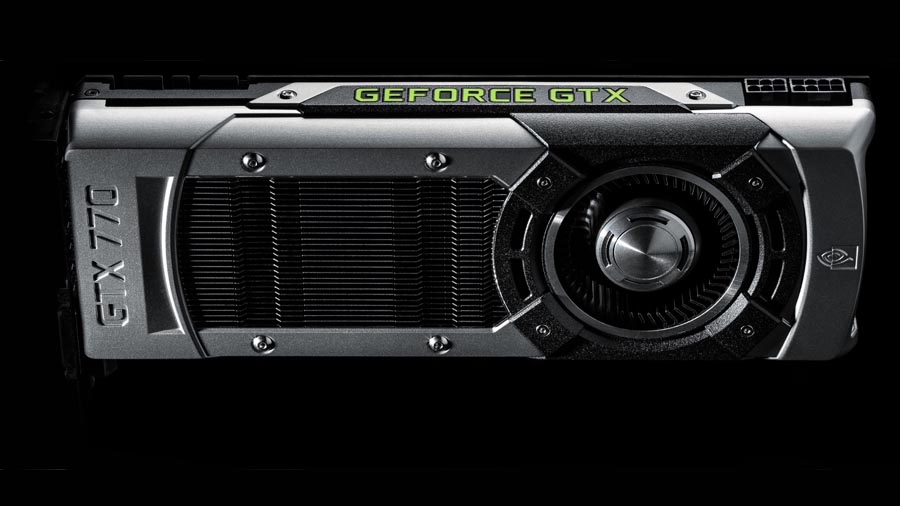
But who cares about the problems of add-in board manufacturers when we can get hold of such a second-tier card that looks this good, overclocks this well, and performs better and costs less than either the top single-GPU cards from the last graphics generation. Certainly not us, and when the profits roll in, certainly not Nvidia.
